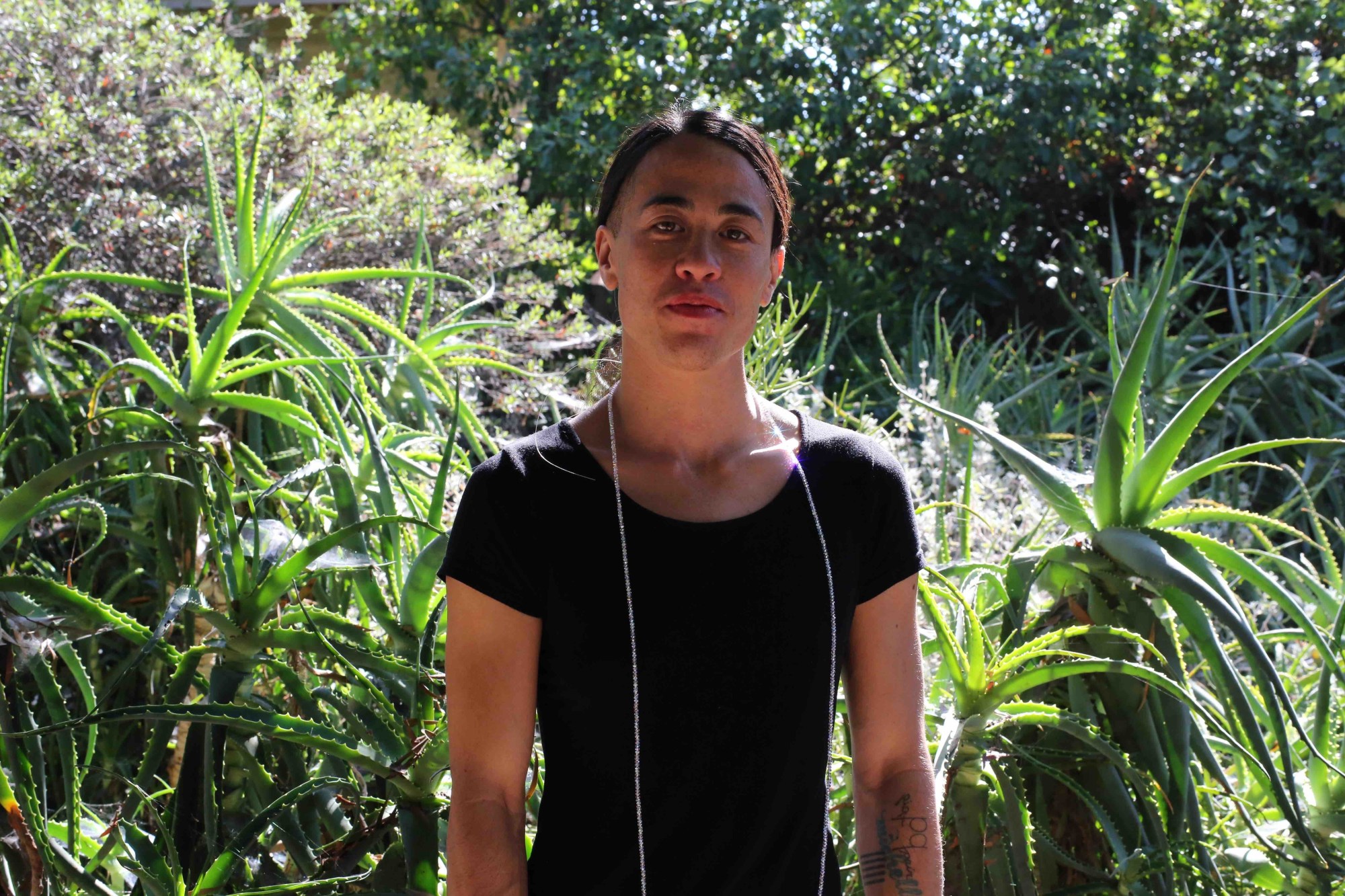Wu Tsang is an American performer and filmmaker whose work engages with queer identity through art and activism. Her work has been shown at the Whitney in New York, and her short film You’re Dead To Me was screened on PBS. Her first feature, Wildness, released in 2012, garnered attention from OUTFEST Los Angeles. The documentary was a portrait of the namesake party/performance event Tsang hosted regularly at the Silver Platter in Los Angeles, a long-standing gathering point for LBGT immigrant communities.
Currently living in Hong Kong, Tsang is working on her upcoming science fiction film, A Day in the Life of Bliss, featuring performance artist boychild, superpowers, and animation. In the meantime, she has kept busy with a Swarovski crystal-and-LED installation at Paris’s FIAC art fair, featured in a prime spot off the Grand Palais’ Balcon d’Honneur. Taking a break from the frenzy of the art fair, Tsang discussed the queer content in crystals, her upcoming film, and the trickiness of taking the trans discussion mainstream.

How did the Swarovski piece come about?
I did an installation at the ICA in London last spring—the original sculpture was a chandelier dress that was made out of the LED lights and the crystals, and I wore it for a performance playing a character. With this piece, it was an opportunity to do it in a focused way, and on a different scale. The title of this piece—Pay No Attention to the Man Behind the Curtain—relates to that scene in The Wizard of Oz where Oz is revealed. The LED lights actually animates a scene from the film, it’s playing inside the structure.
How is it to work outside of your usual medium of film?
When I make films, there’s usually some kind of installation component to it, so working in a three-dimensional space is something that I’m used to doing. I guess it’s more abstract, but the aesthetic of the piece for me definitely involves an exploration of a certain kind of gender. Swarovski crystals—the rhinestone quality—there’s a lot of queer content with the material, for me.
The conversation around gender and transgender has vastly shifted throughout 2015. As someone who’s always overtly engaged with gender, do you find it meaningful that there’s this more mainstream conversation? Or does it make it too reductive?
I think about it a lot. I’m very vocal and doing a lot as a trans activist. The past couple years—maybe in response to the fact that trans is becoming a more mainstream discussion—I feel like, in some sense, that’s an opportunity to have other conversations, so I don’t need to make it my primary one. But I also feel like it’s an important moment to reflect on what that then means for the movement, and how it changes what the demands of the movement might be.
Can you expand on that?
I think a lot of ways in which trans has entered the mainstream spotlight has a lot to do with reaffirming more normative ideas about gender. The narrative continues to be more, “Oh, this person was born this, and now they’re becoming that”—it’s keeping with a gender binary.
Our experiences of the world are never one-directional; gender is just one dimension. For example, I made this documentary film Wildness. A lot of people were confused: is it about immigrants or is it about trans people? Well actually it’s about both. People are experiencing their lives on multiple levels. I’m always trying to find ways to be intersectional.
With this piece in particular, there’s the metaphor of this voice of authority. I’m interested in thinking about power and how that operates. I guess I’m trying to get away from terminology, and explore more in terms of emotions.
So it’s less politicized, in a way?
It’s still very politicized, but I’m searching for a different language with which to talk about the issues—because I find that the more mainstream it is, the more difficult it is to have the same meaning behind the words, so I’m trying to find new words.

Is it just the word transgender itself, or are there other words that are now coded differently, or problematically?
One major thing I have noticed with the trans movement is that it’s following along the line of mainstream movements, whereby people think becoming more visible is the goal… That if there are trans people in the media, in the spotlight, that they are somehow leading by example. And, first of, that is not really changing how people’s lives are, and second, it’s not changing how power circulates and operates. Trans people becoming more powerful doesn’t really disassemble power. So it’s not about gaining for the few, and having the others follow. I’m not interested in being visible in that way.
What are you working on now?
A science fiction film that has to do with this question of underground culture—and if such a thing can be said to exist and what does it do for young people, what is the potential for political resistance. I finished filming but I’m doing a lot of animation. I shot it in Berlin and Mexico and a few other places. I’m now working on it in Hong Kong, and the film has to do with the queer and trans community there.
What has that been like?
Hong Kong is a completely different context—and again, a reason why I find not relying on language to be really useful. It’s about being willing to understand something completely different than how I grew up. The Internet has changed the way we all relate to each other. It’s hard to say that in one city “it’s like this”—it’s about identifying players that are more permeable.
Credits
Text Sarah Moroz
Portrait photography Boychild
Installation photography courtesy Swarovski, Swarovski Series – Wu Tsang 2015
